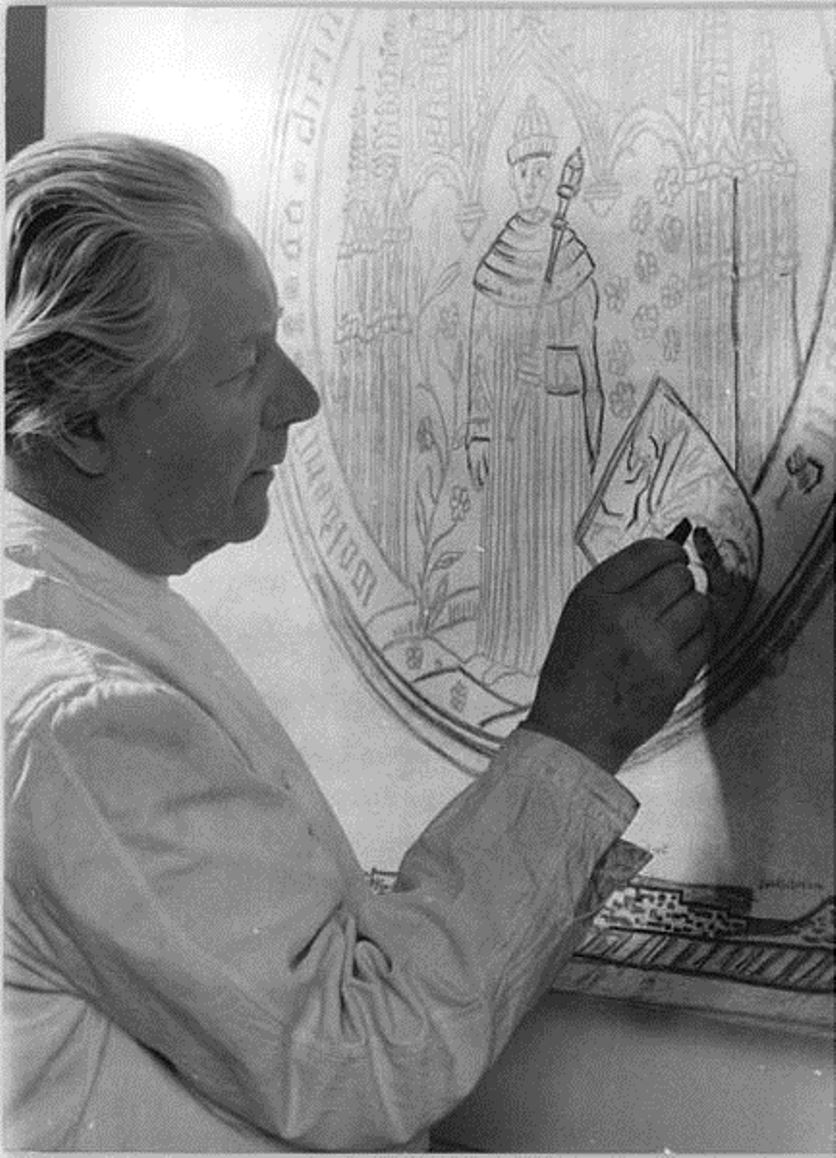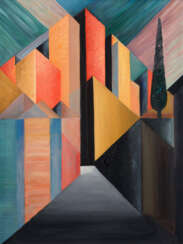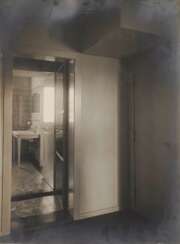peter keler (1898 - 1982)

Peter Keler is a German designer, graphic artist and architect.
Keler began his training at the Kiel School of Applied Arts and then studied at the Bauhaus in Weimar under Oskar Schlemmer and Wassily Kandinsky. He also designed the study of Walter Gropius, then director of the Bauhaus. In 1923, at the first Bauhaus exhibition, Keler presented a baby cradle of his own design, which later became a symbol of the Bauhaus: its design is based on Wassily Kandinsky's synesthetic theory of color and form and consists of a circle, triangle and square. In the same year, the artist became a member of the active Bauhaus group KURI; the movement as a whole was characterized by functionality and conformity to mass production. Then in Weimar he founded his own studio for painting, advertising posters and design.
In 1937 the Nazi Party in Germany banned Keler from exhibiting, but he worked as a freelance architect in Berlin and as a designer for the film company Tobis. At the end of the war, Keler accepted an invitation to the newly founded Weimar School of Architecture and Visual Arts, modeled after the Bauhaus, where he taught drawing, design, and architecture for many years.
Keler's work is still popular and sought after today due to its attractive simplicity. Interior objects designed by Keler, such as chairs and cradles, have been so successful that they are still sold by the German company Tecta.


Peter Keler is a German designer, graphic artist and architect.
Keler began his training at the Kiel School of Applied Arts and then studied at the Bauhaus in Weimar under Oskar Schlemmer and Wassily Kandinsky. He also designed the study of Walter Gropius, then director of the Bauhaus. In 1923, at the first Bauhaus exhibition, Keler presented a baby cradle of his own design, which later became a symbol of the Bauhaus: its design is based on Wassily Kandinsky's synesthetic theory of color and form and consists of a circle, triangle and square. In the same year, the artist became a member of the active Bauhaus group KURI; the movement as a whole was characterized by functionality and conformity to mass production. Then in Weimar he founded his own studio for painting, advertising posters and design.
In 1937 the Nazi Party in Germany banned Keler from exhibiting, but he worked as a freelance architect in Berlin and as a designer for the film company Tobis. At the end of the war, Keler accepted an invitation to the newly founded Weimar School of Architecture and Visual Arts, modeled after the Bauhaus, where he taught drawing, design, and architecture for many years.
Keler's work is still popular and sought after today due to its attractive simplicity. Interior objects designed by Keler, such as chairs and cradles, have been so successful that they are still sold by the German company Tecta.










